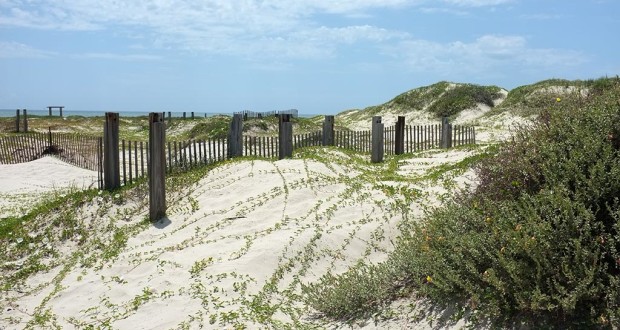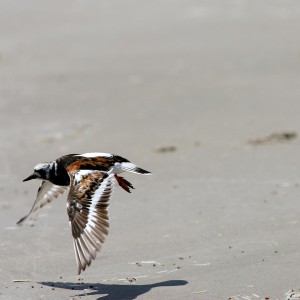The undeveloped white sand beach of the barrier island is framed by sand dunes reaching up to 20 feet that provide shelter for a variety of small, scurrying animals – from spotted ground squirrels to grasshopper mice. Tenacious vegetation, including sea oats and morning glory vines, carpets the dunes and traps the sand that builds them higher and higher over time. Shorebirds pick through the accumulated seaweed, poke the sand in search of small mollusks and comb higher ground for small crabs and other crustaceans.
Because it is a small beach close to Corpus Christi it can get crowded with sunbathers, campers and fisherman, particularly in summer. But the less traveled bay side of the park is another story. A little further down Texas 361 on the left is a turnoff onto a rough, sandy road that runs along a broad fishing canal. Once you reach the bay, a maze of sandy paths follows the shoreline and the grassy wetlands nearby. Around one corner you’ll come across a quiet mudflat, around another a pond surrounded by tall grass. It’s the place to go for birds – wading Red Egrets, Great Blue Herons, Tri-Colored Herons, Snowy Egrets, small sandpipers, Long-billed Curlew, and other shorebirds. The variety grows with the fall and spring migrations of waterfowl, shorebirds and song birds.
For a different view, navigate one of the three paddling trails that run along the shoreline of the bay. The Ashum Trail starts in the park and follows the sandy shoreline for 6.8 miles. The shorter Shamrock Loop Trail (5.2 miles) traces around Shamrock Cove and connects to the longer North Trail (8.5 miles), which wanders the East Flats, marshes and bay islands to the Island Moorings Marina in Port Aransas.
Mustang Island got its name from the hundreds of wild horses that once wandered the grounds, apparently brought there by exploring Spaniards. But today, instead of horses, you’ll see only possums, raccoons, rabbits and an occasional coyote.


You must be logged in to post a comment.